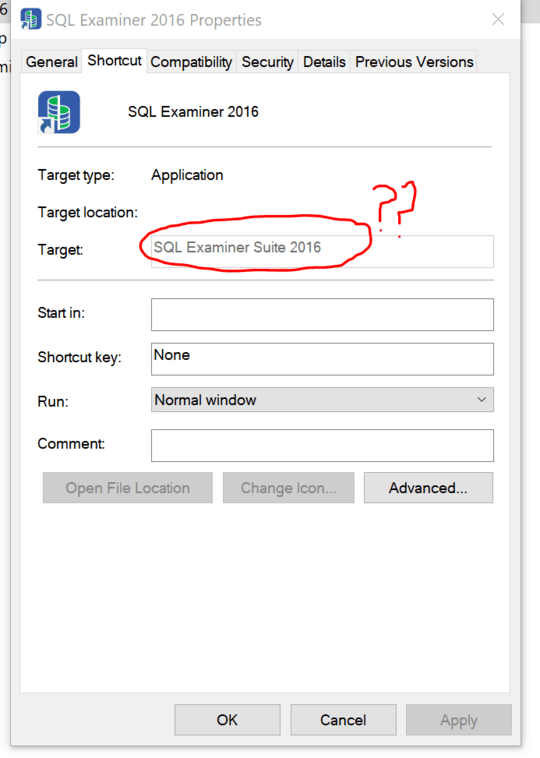If a shortcut doesn't show you the target path, it's probably because it's launching the program in a special way. For example, your program is probably calling Windows Installer to check that all of SQL Examiner's files are present and not corrupted, and then launching the program. (If they were corrupt, Windows would tell you and allow you to repair the program before opening it.) There are other things a special shortcut can do.
That said, it's still a pain in the petards when you can't see where the program is. So one thing I do is open PowerShell (this won't work in CMD), go to the directory where that shortcut is, and then type:
cat 'C:\Users\twalton\AppData\Roaming\Microsoft\Internet Explorer\Quick Launch\User Pinned\TaskBar\File Explorer.lnk'
That causes the contents of that shortcut file to be dumped out to the screen. It'll be some gibberish, but you'll also see some regular text. That text might give you a clue. When I ran the above command, it showed me the innards of the File Explorer shortcut pinned to my taskbar. Among all the gibberish I saw this:
% w i n d i r % \ e x p l o r e r . e x e
That's the program that shortcut is launching.

1
Not an answer, but this isn't a Windows 10 thing, and it's calling a "virtual object": https://blogs.msdn.microsoft.com/oldnewthing/20160902-00/?p=94235
– music2myear – 2017-08-24T22:29:01.953